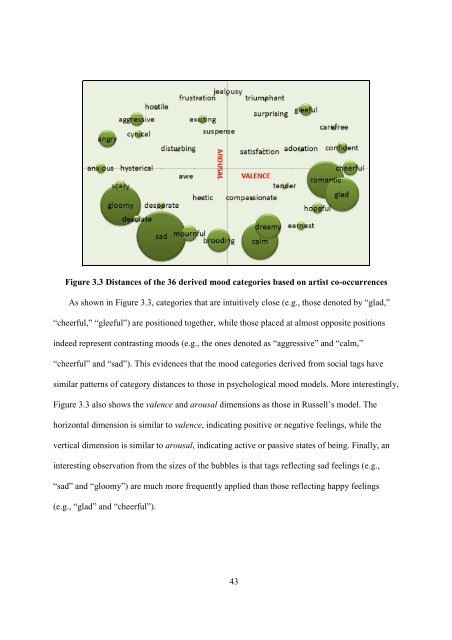improving music mood classification using lyrics, audio and social tags
improving music mood classification using lyrics, audio and social tags
improving music mood classification using lyrics, audio and social tags
Create successful ePaper yourself
Turn your PDF publications into a flip-book with our unique Google optimized e-Paper software.
Figure 3.3 Distances of the 36 derived <strong>mood</strong> categories based on artist co-occurrences<br />
As shown in Figure 3.3, categories that are intuitively close (e.g., those denoted by “glad,”<br />
“cheerful,” “gleeful”) are positioned together, while those placed at almost opposite positions<br />
indeed represent contrasting <strong>mood</strong>s (e.g., the ones denoted as “aggressive” <strong>and</strong> “calm,”<br />
“cheerful” <strong>and</strong> “sad”). This evidences that the <strong>mood</strong> categories derived from <strong>social</strong> <strong>tags</strong> have<br />
similar patterns of category distances to those in psychological <strong>mood</strong> models. More interestingly,<br />
Figure 3.3 also shows the valence <strong>and</strong> arousal dimensions as those in Russell’s model. The<br />
horizontal dimension is similar to valence, indicating positive or negative feelings, while the<br />
vertical dimension is similar to arousal, indicating active or passive states of being. Finally, an<br />
interesting observation from the sizes of the bubbles is that <strong>tags</strong> reflecting sad feelings (e.g.,<br />
“sad” <strong>and</strong> “gloomy”) are much more frequently applied than those reflecting happy feelings<br />
(e.g., “glad” <strong>and</strong> “cheerful”).<br />
43
















